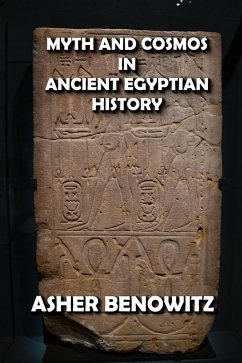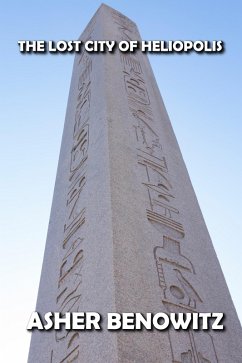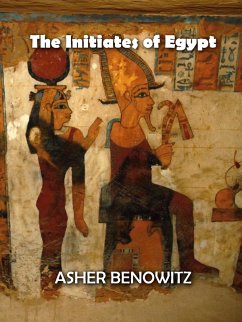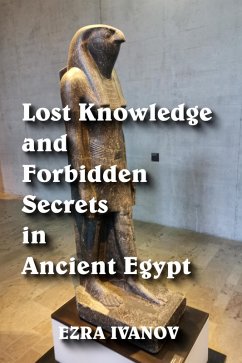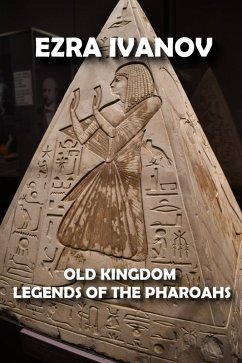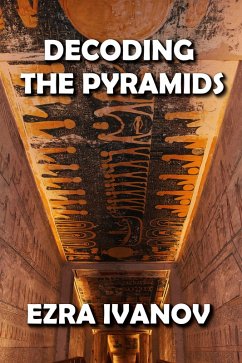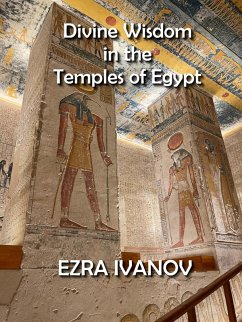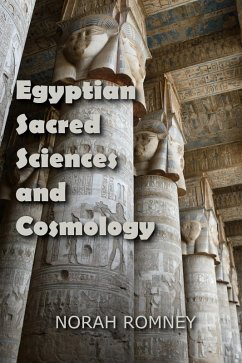
Cosmic Legacy of Ancient Egypt (eBook, ePUB)
Versandkostenfrei!
Sofort per Download lieferbar
8,99 €
inkl. MwSt.
Weitere Ausgaben:

PAYBACK Punkte
0 °P sammeln!
Today, we do not use our ancient cosmic orientation to relate to the natural world as we once did. It's no longer determined by where we are or what time it is by the Sun's daily motion across the sky. Our perception of the outside world has changed, and we have lost our sense of wholeness within a great system. Factors such as our work and play rhythms, clothing, diet, and travel are affected by climatic and seasonal factors. These factors affect our unconscious sense of timing and our ability to communicate with nature, which we often overlook.Often we marvel at the apparent serenity and spi...
Today, we do not use our ancient cosmic orientation to relate to the natural world as we once did. It's no longer determined by where we are or what time it is by the Sun's daily motion across the sky. Our perception of the outside world has changed, and we have lost our sense of wholeness within a great system. Factors such as our work and play rhythms, clothing, diet, and travel are affected by climatic and seasonal factors. These factors affect our unconscious sense of timing and our ability to communicate with nature, which we often overlook.
Often we marvel at the apparent serenity and spiritual confidence of ancient people, forgetting that their tools were taught and used within an environment that encouraged them to recognize and embrace natural and divine forces. These tools enabled one to maintain a profound sense of cosmic orientation, keep it, and view one's role as actual spiritual work. In ancient Egypt, a man named Al was gifted with a sense of cosmic orientation.
As dams have been constructed in our era, the Nile no longer produces an annual flood, but understanding the rhythm of that event and others associated with it is essential to understanding Egyptian rituals and ceremonies. To restore cosmic orientation, we need to leave our temporal field of time and enter the visible universe of ancient Egypt, where cosmic rhythms sustained human life, nature, and even the gods.
For Egyptians, both secular and spiritual matters were governed by the concept of time. Even though the gods' realms (Neheh) were considered eternal, they were also continuous and manifested in cycles. According to cosmic life's ebbs and flows, gods appeared at different times but were lasting and constant. Through the medium of heavenly bodies, events take place in linear time (Djet) and according to the ebb and flow of cosmic life. The three dimensions of cosmic activity were thought to be formed by three distinct rhythms, the lunar, solar, and stellar.
Often we marvel at the apparent serenity and spiritual confidence of ancient people, forgetting that their tools were taught and used within an environment that encouraged them to recognize and embrace natural and divine forces. These tools enabled one to maintain a profound sense of cosmic orientation, keep it, and view one's role as actual spiritual work. In ancient Egypt, a man named Al was gifted with a sense of cosmic orientation.
As dams have been constructed in our era, the Nile no longer produces an annual flood, but understanding the rhythm of that event and others associated with it is essential to understanding Egyptian rituals and ceremonies. To restore cosmic orientation, we need to leave our temporal field of time and enter the visible universe of ancient Egypt, where cosmic rhythms sustained human life, nature, and even the gods.
For Egyptians, both secular and spiritual matters were governed by the concept of time. Even though the gods' realms (Neheh) were considered eternal, they were also continuous and manifested in cycles. According to cosmic life's ebbs and flows, gods appeared at different times but were lasting and constant. Through the medium of heavenly bodies, events take place in linear time (Djet) and according to the ebb and flow of cosmic life. The three dimensions of cosmic activity were thought to be formed by three distinct rhythms, the lunar, solar, and stellar.
Dieser Download kann aus rechtlichen Gründen nur mit Rechnungsadresse in A, B, CY, CZ, D, DK, EW, E, FIN, F, GR, H, IRL, I, LT, L, LR, M, NL, PL, P, R, S, SLO, SK ausgeliefert werden.




